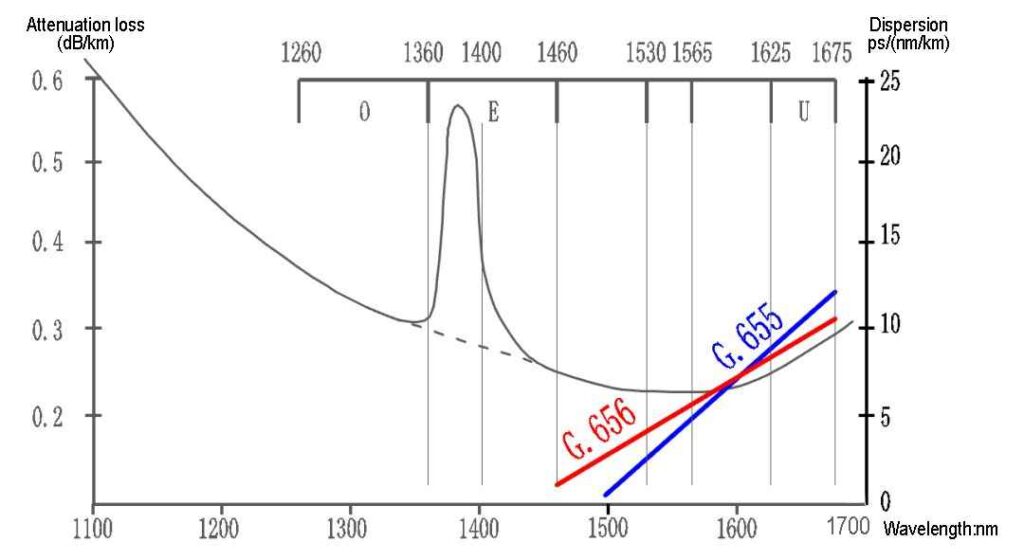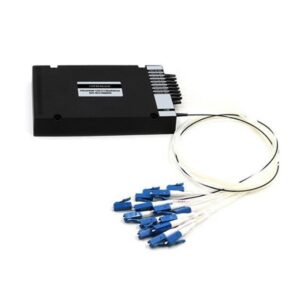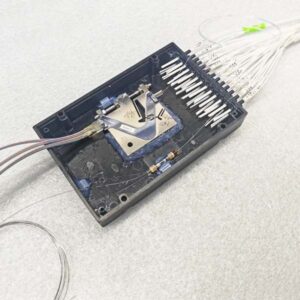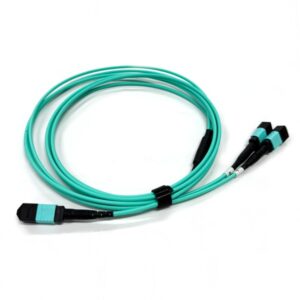Optical fibers can be classified in various ways according to different characteristics. For example, according to the transmission mode, they can be divided into single mode fiber and multimode fiber. According to the refractive index: jump fiber and gradient fiber. According to the ITU-T standard, communication fiber are divided into 7 categories: G.651, G.652, G.653, G.654, G.655, G.656, and G.657, among which the commonly used is G652 fiber and G657 fiber.
What are ITU standards?
The ITU standard is the International Telecommunication Union standard. ITU-T is an organization under the management of the International Telecommunication Union that specializes in formulating international standards related to telecommunications.
In order to make fiber have a unified international standard, ITU-T has developed a unified optical fiber standard (G standard). According to ITU-T’s recommendations, fiber are divided into seven major categories, and each major category has some subcategories.
G.651 is a multimode fiber, while G.652 to G.657 are all single mode fibers. The specific characteristics and applications are as follows in Table 1:
| Fiber type | Name | Features | Application |
| G651 | Multimode graded index fiber | Applicable to wavelength 850nm/1310nm | Mainly used in LAN, not suitable for long distance transmission |
| G652 | Dispersive non-shifted single mode fiber | Zero dispersion wavelength is 1310nm, but can also be used in the 1550nm wavelength range | The most widely used optical fiber |
| G653 | dispersion shifted fiber | Dispersion is minimized around 1550nm wavelength, thus minimizing optical losses | Very suitable for long-distance single-channel optical communication systems |
| G654 | cutoff wavelength shifted fiber | 1550nm has the lowest attenuation (about 15% lower than G652, G653, G655 fiber), so it is called low-loss fiber, and the dispersion coefficient is the same as G652D | Mainly used for long distance transmission on the seabed or on the ground |
| G655 | Non-zero dispersion shifted fiber | Dispersion at 1550nm is close to zero, but not zero | G655 was used in early WDM and long-distance optical cables |
| G656 | Low slope non-zero dispersion shifted fiber | The attenuation is low at 1460nm-1625nm, but when the wavelength is less than 1530nm, the dispersion is too low for WDM system | Ensures transmission performance within a wider wavelength range in DWDM systems |
| G657 | Bend insensitive fiber | Bending loss insensitive optical fiber, the minimum bending radius can reach 5-10mm | It is the most commonly used optical cable for FTTH home access. |
What is non-zero dispersion shifted fiber (NZDF)?
The dispersion of this kind of fiber is not zero at the wavelength of 1550nm, so it is called non-zero dispersion shifted fiber. It has reasonably low dispersion in the 1550nm wavelength region, which is enough to support 10Gbit/s long-distance transmission without dispersion compensation. At the same time, its dispersion value maintains non-zero characteristics to suppress the impact of nonlinear effects such as four-wave mixing and cross-phase modulation. . This fiber mainly uses dense wavelength division multiplexing transmission system.
G.651 Fiber
Fiber consists of core, cladding and coating, as shown in Figure 1. The cladding diameter is usually 125um, and the coating layer (after coloring) is generally 250um; but the diameter of the core is not a fixed value, because the difference in core diameter directly leads to huge changes in the transmission performance of the fiber.

The multimode fiber core diameter is generally 50um ~ 100um. When the core diameter becomes smaller, the transmission performance is significantly improved. There are many transmission modes in fibers, as shown in Figure 2. When the fiber core diameter becomes smaller, the number of optical signal transmission modes will also decrease, and the interference between each transmission mode will decrease.

When the core diameter is smaller to a certain value, there is only one transmission mode, that is single mode fiber,as shown in Figure 3.

Multimode fiber 50/125μm is a multimode graded refractive index fiber, suitable for short-distance transmission with a wavelength of 850nm/1310nm. It is mainly used in local area networks and is not suitable for long-distance transmission. However, in short-distance 300~500 transmission networks, G651 is a lower cost multimode transmission fiber. Mainly used in multi-tenants, residential buildings, and enterprise networks in FTTH networks. Its bending radius is half that of G652 optical fiber (about 15mm), which is their main advantage and makes it suitable for indoor laying like FTTH network.
G.652 Fiber
G.652 is a dispersive non-shifted single mode fiber with the shortest cut-off wavelength. It can be used for both 1550nm and 1310nm, but the best working wavelength is 1310nm. The characteristic is that the dispersion is zero when the wavelength is near 1310nm, the attenuation is 0.3~0.4dB/km, and the dispersion coefficient is 0~3.5ps/nm.km; at wavelength 1550nm the loss is minimal, the attenuation is 0.19~0.25dB/km, and the dispersion coefficient is 15~18ps/nm.km, but the dispersion coefficient in the 1550nm band is large, 17ps/(nm·km), which is not suitable for long-distance applications above 2.5 Gb/s.
G652 fiber can be divided into G652A, G652B, G652C, and G652D. The main difference lies in PMD (polarization mode dispersion). A/B are basic single-mode optical fibers, and C/D are low water peak single-mode optical fibers. Among them, G652D is the most commonly used. Since its fiber dispersion is very small when operating at a wavelength of 1300nm, the transmission distance of the system is only limited by loss.
G.652 optical fiber is the most widely used fiber. At present, except for fiber to the home (FTTH) drop cable, almost all fibers used in long distance and urban areas are G.652 fiber.
From the perspective of light energy distribution, the optical signal in single mode fiber is not only transmitted in the core, but also in the cladding. In order to describe the concentration of light energy in a single-mode fiber, the maximum distance between two points at each point where the light intensity in the fiber is reduced to 1/(e^2) of the maximum light intensity at the axis is defined as the mode field diameter, as shown in Figure 4.

Obviously, the mode field diameter can better reflect the transmission characteristics of single mode fiber, so the single mode fiber core diameter is simply not mentioned. Mode field diameter is an important parameter of single-mode fiber, and its size increases with wavelength.
One of the most important factors affecting the transmission distance of fiber is attenuation. The attenuation coefficient of fiber is related to the wavelength. The loss coefficient of conventional single-mode fiber is shown in Figure 5. It can be seen from the figure that the fiber attenuation at 1310nm and 1550nm is small, and 1310nm and 1550nm have become the two most commonly used wavelength windows for single-mode fiber.

G.653 Fiber
As the speed of optical communication systems further increases, signal transmission begins to be affected by fiber dispersion. Dispersion refers to the phenomenon of signal distortion (pulse broadening) caused by different frequency components or different modes of signals (pulses) propagating at different speeds after reaching a certain distance, as shown in Figure 6.

The dispersion coefficient is also related to the wavelength, as shown in Figure 7. Single mode fiber has the smallest attenuation at 1550nm, but the dispersion at this wavelength is larger. So people developed a single mode fiber with a 0 dispersion at 1550nm. This seemingly perfect fiber is G.653.

The dispersion of G.653 fiber is minimized at around 1550nm, thereby minimizing optical loss and is very suitable for long-distance single channel optical communication systems. Nowadays, G.653 fiber is almost no longer deployed and has been replaced by G.655 fiber for WDM applications because the channels allocated near 1550nm in G653 fiber are severely affected by noise caused by nonlinear effects, though the fiber dispersion is 0 but it is not suitable for wavelength division (WDM) system.
G.654 Fiber
G654 fiber has the lowest attenuation coefficient at 1550nm (about 15% lower than G652, G653, and G655 fiber), so it is called low loss fiber. Its dispersion coefficient is the same as G652, and it is actually the least used fiber. It is mainly used for long distance transmission under the sea or on the ground, such as a 400 kilometer route without a transponder. It includes five revisions, namely G.654.A, G.654.B, G.654.C, G.654.D and G.654.E. A B C D fibers are suitable for extended long-distance subsea applications, while the G654.E fiber is specially designed for high-speed and long-distance terrestrial optical networks.
G.654 optical fiber is mainly used in submarine cable communication systems. In order to meet the needs of long-distance and large-capacity submarine cable communications, G.654 fiber has been improved in two aspects.
- Reduce the fiber loss: from 0.22dB/km of G.652 to 0.19dB/km (standard value).
- Increase the mode field diameter: the larger the mode field diameter of the optical fiber, the smaller the energy density through the cross-section of the fiber, thereby improving the nonlinear effect of the fiber and improving the signal-to-noise ratio of the fiber communication system.
The easiest way to increase the mode field diameter of an optical fiber is to increase the core diameter. When the core diameter increases, the cut-off wavelength of the optical fiber increases. It is not difficult to understand that the name of G.654 fiber is: cut-off wavelength shifted fiber (the cut-off wavelength of G.654 fiber is about 1530nm, and other single-mode fibers are generally 1260nm). Of course, the core diameter cannot be increased too much, otherwise even the wavelength range of 1550nm cannot be used, and it will become a multi-mode fiber.
G.655 Fiber
Because the dispersion of G.653 fiber at the wavelength of 1550nm is zero, not suitable for the WDM system, so a fiber with very small but not zero dispersion at the wavelength of 1550nm was developed. This is the G.655 fiber. G.655 fiber has the smallest loss near the 1550nm wavelength, small dispersion and is not 0 which can be used in WDM systems. It is an improved dispersion shifted fiber to suppress four-wave mixing. Therefore, G.655 fiber has been the first choice for WDM and long-distance trunk lines for more than 20 years around 2000. The attenuation coefficient and dispersion coefficient of G.655 optical fiber are shown in Figure 8.

However, such good fiber may one day be eliminated. With the maturity of dispersion compensation technology, G.655 fiber has been replaced by G.652 fiber. Starting around 2005, long-distance trunk lines began to use G.652 fiber on a large scale. Currently, G.655 fiber is almost only used for the maintenance of original long-distance lines.
There is another important reason for the elimination of G.655 fiber: the standard mode field diameter of G.655 fiber is 8 to 11um (1550nm). The mode field diameter produced by different fiber manufacturers may vary greatly, but the model of the fiber does not. Any difference, and fibers with large differences in mode field diameter will have greater attenuation when connected, which brings great inconvenience to maintenance; therefore, in the trunk system, even using G.652 fiber requires a larger cost of dispersion compensation, users are not willing to choose G.655 optical fiber.
G.656 Fiber
Before introducing G.656 fiber, let’s go back to the era when G.655 dominated long-distance trunk lines.
From the perspective of attenuation characteristics, G.655 fiber can be used for communication in the wavelength range from 1460nm to 1625nm (S+C+L band). However, because the fiber dispersion below 1530nm wavelength is too small, it is not suitable for wavelength division WDM system, so the usable wavelength range of G.655 fiber is 1530nm ~ 1525nm (C+L band).
In order to make the fiber’s wavelength range of 1460nm to 1530nm (S-band) also can be used for communications, so finally reduced the dispersion slope of G.655 fiber, then it is G.656. The attenuation and dispersion of G.656 fiber are shown in Figure 9.

G.656 is a low-slope non-zero dispersion-shifted fiber, has strict requirements on the speed of dispersion, ensuring transmission performance within a larger wavelength range in the DWDM system. The attenuation of G.655 fiber is low at 1460nm -1625nm, but when the wavelength is less than 1530nm, the dispersion is too low for WDM systems. Therefore, G.656 fiber is not suitable for applications from 1460nm to 1530nm.
And due to the fiber nonlinear effect, the number of channels in long-distance WDM systems will not increase significantly. However, the construction cost of metropolitan optical fibers is low, and it is of little significance to increase the number of channels in WDM systems. Therefore, the current dense wavelength division (DWDM) system is mainly 80/160 wave, and the C+L band of fiber is enough to meet the demand. Unless high-speed systems have larger requirements for channel spacing, G.656 optical fiber will never be used on a large scale.
G.657 Fiber
G657 is a bending loss insensitive fiber with a minimum bending radius of 5~10mm, which is less than half the curvature radius of G.652 fiber. It is the most commonly used optical fiber cable for FTTH.
It is widely used due to its better performance, but the cost is higher than G652D. The ITU-T standard divides G657 into two subcategories, A and B, which are further divided into four subcategories: A1, A2, B2, and B3. The available wavelengths for Class A are O, E, S, C, and L bands, and the available wavelengths for Class B are O, C, and L bands.
| Fiber type | Min. Bend radius | Wavelength range |
| G657.A1 | 10mm | O, E, S, C, L band |
| G657.A2 | 7.5mm | O, E, S, C, L band |
| G657.B2 | 7.5mm | O, C, L band |
| G657.B3 | 5mm | O, C, L band |

Each major category of communication optical fiber is divided into many subcategories. For example, the most commonly used G.652 fiber is divided into four categories: G.652A, 6.652B, G.652C, and G.652D. Due to space limitations, this article does not introduce the subcategories of each major category.





